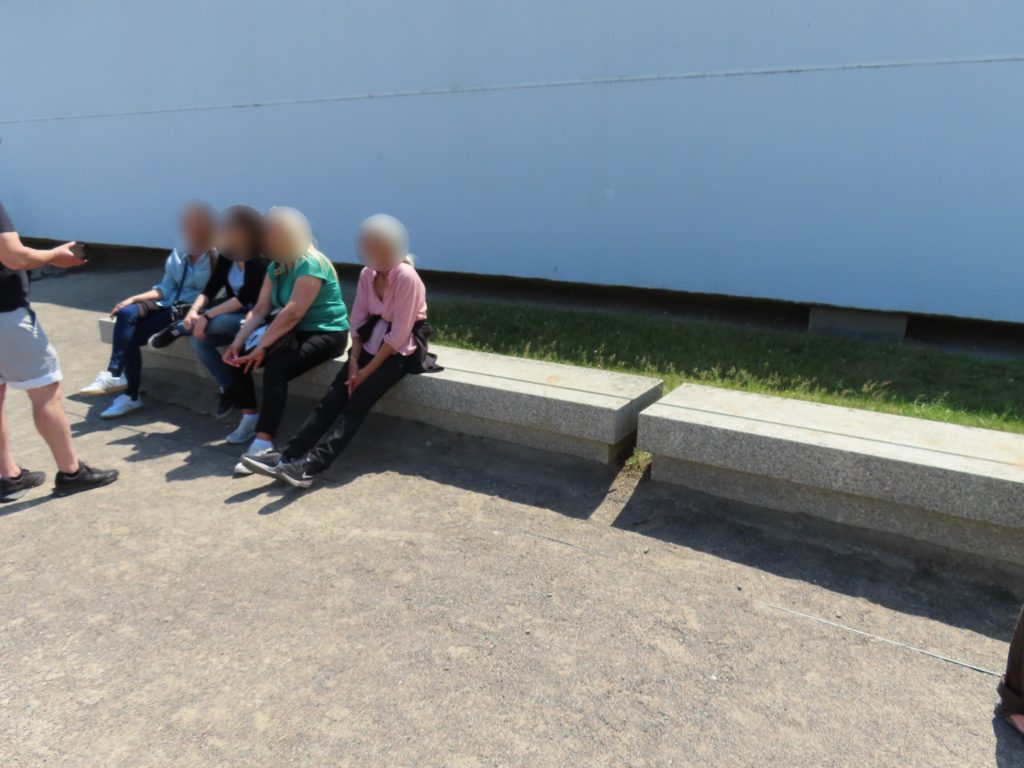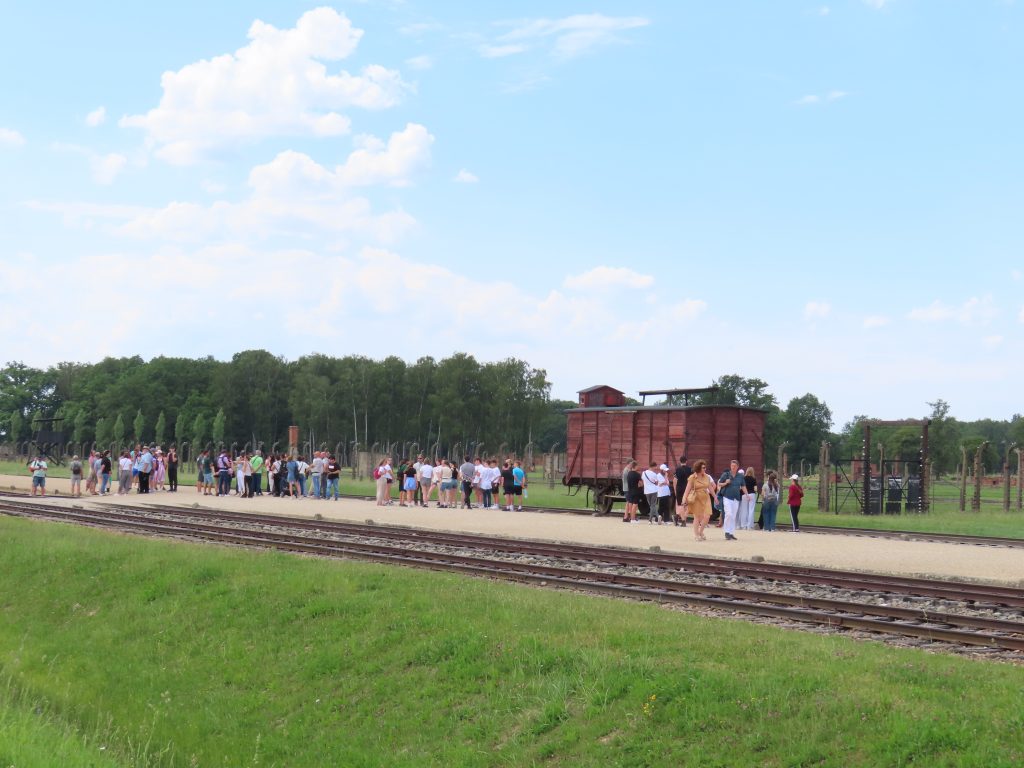
At first glance, one could assume that this concrete slab would be a bench for tired visitors to sit on as they traverse the vast site of the former concentration camp of Sachsenhausen. However, in actuality, it is a grave marker for a mass killing site. You would think that while these people are getting a tour at the site, they must know what they are sitting on, but this is not necessarily true. The signage marking this site has worn off, leaving only the small English translation available. The structure itself is also quite similar in design to that of the actual benches at the site. And, as outside contractors, the tour guides are not associated with the Museum so we don’t know how much training and knowledge they hold. All of this is important in crafting the full story of these tourists, but if you did not dig deeper into the story, you could easily assume that this is simply an act of disrespect. The design of this particular space does not lend to informed reflection like the Sinti and Roma memorial, it works against the visitor in its design by almost disguising itself as a bench. The lack of signage is also an issue as even if a visitor tried to figure out what the structure was, it would not be easy for them to find out.
Once a member of our group asked them to move, they stood up without a fuss, revealing that they themselves were Jewish visitors. With this discovery, we now have another set of questions. Does that then change the narrative? Do Jewish visitors get a different set of social rules when interacting with these places than non Jewish visitors? And if so why? How do you then police people’s behaviours if different people have different social rules for what is considered appropriate behaviour at these sites? And how does that play into our judgments of people’s actions? If you saw someone taking a selfie at a concentration camp, what would your reaction be if they were a concentration camp survivor or their descendant verse someone with no connection to the Holocaust? Is it possible to police that without assuming peoples ancestors and intentions?

